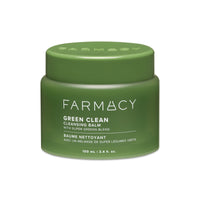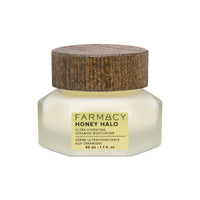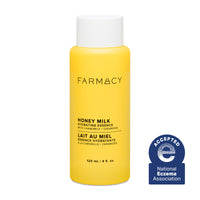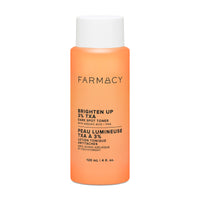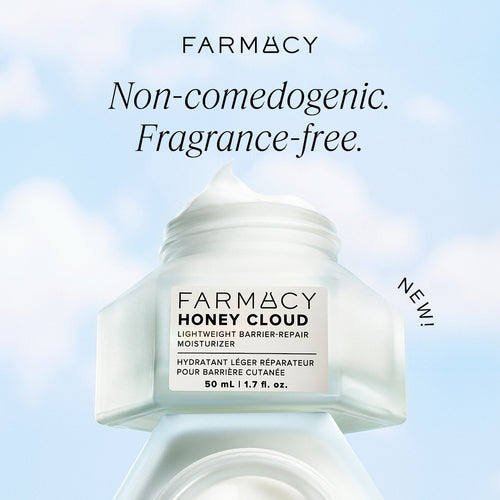Slugging Skincare: How to Do the Viral Hydration Hack for Glowing, Dewy Skin

What Is Slugging? Breaking Down the Viral Skincare Trend
Slugging skincare has taken the beauty world by storm, with influencers, dermatologists, and TikTok creators raving about its glow-boosting benefits. But what is slugging, exactly?
At its core, slugging is the practice of sealing your skin with an occlusive product that forms a physical barrier to lock in moisture and prevent water loss. Occlusives don’t hydrate the skin but create a protective layer that helps your skincare products work more effectively overnight. Think petroleum jelly, balms, or rich ointments that act like a shield while you sleep.
The result? Dewy, plump, and glowing skin come morning.
Where Did Slugging Originate?
Slugging isn’t new; it stems from Korean beauty rituals, which have long emphasized hydration and skin barrier repair. The nickname “slugging” comes from the shiny, slick look the occlusive layer creates, like a slug’s trail.
Why Slugging Went Viral: TikTok, Reddit, and Influencers
While dermatologists have recommended occlusive therapy for decades, slugging got its name and fame thanks to social media platforms. Viral videos and skincare forums like Reddit’s r/SkincareAddiction helped catapult this K-beauty tradition into mainstream Western routines.

Why Slugging Works: The Science Behind Occlusive Hydration
Slugging works by forming a protective layer over your skin, which helps to prevent transepidermal water loss (TEWL). This occlusive barrier supports your skin’s natural repair processes, especially overnight.
Understanding the Skin Barrier
The outermost layer of your skin, the stratum corneum, acts as a shield against environmental aggressors and water loss. When this barrier is compromised, your skin becomes dry, irritated, and prone to breakouts. Slugging helps reinforce this barrier for better moisture retention.
How Occlusives Lock in Moisture
Occlusives don’t add moisture but lock in what’s already there. After applying hydrating products like hyaluronic acid or a moisturizer, sealing them with an occlusive prevents evaporation, keeping your skin plump and hydrated.
The Role of Petrolatum and Other Ingredients
Petrolatum is the most common occlusive used in slugging because it reduces water loss by up to 98%. It is also non-comedogenic, meaning it won’t clog pores for most skin types. Alternative occlusives include beeswax, lanolin, and clean formulas like squalane-based balms, which offer gentler hydration for sensitive skin.

Benefits of Slugging: What Your Skin Gains from This Method
Slugging delivers multiple benefits, particularly for dry, irritated, or compromised skin.
Repairing Dry or Damaged Skin
By sealing in moisture, slugging allows your skin to heal faster, reducing flakiness, irritation, and redness. Slugging is even more effective during harsh weather or after using exfoliating treatments.
Enhancing the Efficacy of Serums and Moisturizers
Slugging amplifies the performance of your nighttime skincare products. When layered over hydrating serums and moisturizers, slugging helps active ingredients absorb better and remain effective longer.
Slugging vs. Traditional Night Creams
Unlike traditional night creams, which combine hydration and mild occlusion, slugging focuses on pure occlusion. It doesn’t replace your moisturizer but boosts its impact by locking everything in.
Is Slugging Right for You? Skin Types That Benefit and Who Should Avoid It
Slugging can be revolutionary for many skin types, but it is not one-size-fits-all.
Slugging for Dry and Sensitive Skin
If your skin often feels tight, flaky, or easily irritated, slugging might be your new best friend. The occlusive layer helps reduce moisture loss and calm inflammation, making it ideal for dry or sensitive skin. Those with eczema or compromised skin barriers often see dramatic overnight improvements.
Caution for Acne-Prone and Oily Skin
People with oily or acne-prone skin should approach slugging more cautiously. Occlusives like petrolatum can trap sebum, bacteria, and dead skin cells underneath if the skin isn’t properly cleansed. This can lead to clogged pores or breakouts. If you fall into this category, consider slugging only once a week or using lighter occlusives like squalane or dimethicone.
Adjusting Slugging Frequency by Skin Type
-
Dry skin: 3–4 times a week
-
Combination skin: 1–2 times a week
-
Oily skin: Spot slugging or occasional use
Step-by-Step: How to Slug Your Face for Maximum Glow
Ready to try slugging? Follow this guide on how to slug your face safely and effectively for your most glowing results yet.
Step 1: Cleanse Thoroughly
Start with a gentle, hydrating cleanser like our Green Clean Gentle Creamy Cleanser to remove dirt, makeup, and SPF. Clean skin is essential because trapping impurities under an occlusive layer can lead to breakouts.
Step 2: Apply Your Hydrating Layers
After cleansing, apply any water-based serums, followed by your regular moisturizer. Ingredients like hyaluronic acid, glycerin, and ceramides are perfect here.
Step 3: Seal It All In with an Occlusive
Once your skincare has absorbed, apply a thin layer of an occlusive product (like petrolatum, squalane balm, or ointment). This locks in moisture and boosts the efficacy of everything underneath.
Step 4: Leave It Overnight
Let the occlusive work its magic while you sleep. It may feel a bit sticky, so you might want to sleep on a towel or use a silk pillowcase.
Step 5: Cleanse Gently in the Morning
In the morning, gently wash your face with a non-stripping cleanser or our most lovedGreen Clean Fragrance-Free Cleansing Balm to remove any residue. Then, follow your usual daytime skincare routine and SPF. Your skin should feel noticeably softer, plumper, and more hydrated.

Common Slugging Mistakes and How to Avoid Them
Even though slugging is simple, a few common missteps can hinder results or cause breakouts.
Slugging Mistake #1: Using the Wrong Occlusive
Not all occlusives are created equal. Skip coconut oil or comedogenic balms, which can cause skin irritation or clog pores. Stick with non-comedogenic products like petrolatum or fragrance-free squalane balms.
Slugging Mistake #2: Slugging Without Proper Cleansing
Never apply an occlusive over dirty skin. Applying occlusives over uncleansed or dirty skin traps sweat, makeup, and bacteria beneath the barrier. This can cause congestion and breakouts. Always double-cleanse before slugging, especially if you wear sunscreen or makeup.
Slugging Mistake #3: Overdoing It
More isn’t always better. Daily slugging may overwhelm skin that's naturally oily or acne-prone. Observe how your skin responds, and consider limiting slugging to 1–3 times a week based on your skin type and climate.
Best Products for Slugging in 2025
The best products for slugging are rich, occlusive, and non-comedogenic. Here are the most effective types of occlusive products for your slugging routine.
100% Petrolatum Ointments
100% petrolatum ointments provide the most effective barrier for sealing in moisture. Classic choices includeVaseline Original Healing Jelly andAquaphor Healing Ointment, both widely recommended for dry, compromised skin.
Barrier-Repair Ointments
Barrier-repair ointments combine occlusives with added ingredients like ceramides or humectants.CeraVe Healing Ointment, for example, offers the sealing benefits of petrolatum plus barrier-repair support.
Non-Petroleum Balms
If you prefer a cleaner or plant-based alternative, look for products made with squalane, beeswax, or plant oils. OurHoney Halo is a great option. It is ideal for distressed, dry skin and renews skin for a dewy, healthy-looking glow.
Slugging Myths Debunked
Let’s separate fact from fiction.
Does Slugging Cause Breakouts?
Not inherently. Breakouts typically result from applying occlusives over dirty skin or using comedogenic products. When done correctly with proper cleansing and suitable products, slugging can reduce irritation and inflammation.
Is Slugging Just for Winter?
Nope! While slugging is helpful in dry, cold weather, it’s not exclusive to winter. It can benefit your skin year-round, notably in environments with dry air, after retinol use, or when your skin barrier is compromised.
Can You Slug Without Petrolatum?
Absolutely. While petroleum is the gold standard for occlusion, alternatives like beeswax and squalane-based balms are excellent for those seeking natural or non-petroleum solutions. Just make sure they’re non-comedogenic and suited to your skin type.

Final Thoughts: Should You Add Slugging to Your Skincare Routine?
Slugging is more than a viral trend; it is a science-backed hydration technique to boost your nighttime routine and give your skin that coveted “glass skin” glow.
Summary of Slugging Pros and Cons
Pros:
-
Locks in hydration and prevents water loss
-
Helps repair the skin barrier
-
Enhances the effects of moisturizers and serums
-
Affordable and accessible to most skin types
Cons:
-
Can clog pores if used on dirty or acne-prone skin
-
Not ideal for daily use for oily or combination skin types
-
Requires ingredient mindfulness (some occlusives can irritate)
Who Should Try Slugging?
If you’ve struggled with dryness, flakiness, or skin sensitivity, or if your skin feels tight despite moisturizing, slugging may be exactly what your skincare routine has been missing. With the right prep and product, slugging is a low-effort, high-impact way to support healthy, glowing skin.
Support Your Skin Barrier with Farmacy Beauty
While traditional slugging relies on heavy occlusives like petrolatum, clean, effective alternatives can still achieve long-lasting hydration and barrier repair. Farmacy Beauty offersnourishing skincare made withingredients likebuckwheat honey,plant-based ceramides, andfruit extracts to help your skin stay smooth, supple, and resilient.
Explore our skin barrier-friendly solutions in our most-lovedhoney skincare collection, perfect for prepping or supporting slugging-like hydration.
